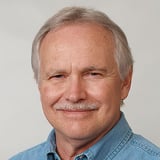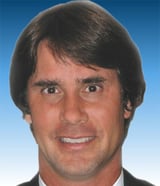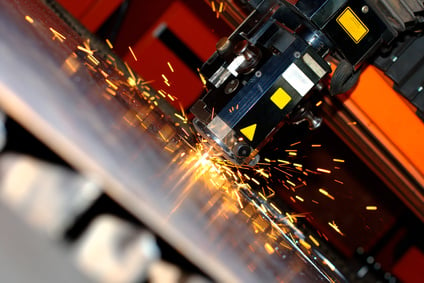The following tip is from the ISA book by Greg McMillan and Hunter Vegas titled 101 Tips for a Successful Automation Career, inspired by the ISA Mentor Program. This is Tip #101, and was written by Greg.
The pressure to reduce inventories, coupled with changing market demands and fluctuations in raw material and energy prices, requires a process plant to be able to respond quickly to maintain optimum operation. To most efficiently support changes in production rate or product grade, flows must change in unison throughout the plant. Feedback loops cannot do this. Feedback loops will eventually arrive at the right flows but time will be lost and product quality may suffer in the interim. Feedforward control allows the plant automation system to respond immediately in unison to changes in production rate or product grade. During normal production, feedforward control can also compensate for composition, pressure, and temperature upsets before they have a significant impact on production rates or product quality.
Plant-wide feedforward can preemptively move a plant to match the flows and conditions (e.g., temperature and composition) of all important process streams on a process flow diagram (PFD) for a given product and production rate, thereby maintaining material, component, charge, and energy balances. Plant-wide feedforward flow control provides the fastest and least disruptive transition to new operating conditions.
Traditionally, feedforward has been implemented on just the most important loops in the most critical unit operations. The benefit is localized and the other loops are left to fend for themselves. The result is that the plant does not fully reach the new production rate or product grade until the changes in process conditions propagate from one end of the plant to the other. The plant does not settle out until each of the unit operations settles out. For feedback control, the settling time of a loop is at least four deadtimes, based on tuning practices. The total settling time can be roughly estimated as the sum of the settling times of the loops in series. In contrast, plant-wide feedforward control can reduce the plant settling time to the deadtime and settling time of the slowest loop for perfect and imperfect feedforward, respectively. Perfect feedforward requires no feedback correction.
Feedforward control has the ability to provide the preemptive correction of any disturbance that can be measured. The disturbance can be due to maintenance, abnormal conditions, operator actions or sequences, or to changes in load (feed), raw materials, recycle streams, utilities, and/or environmental conditions. The source of sequences can be the batch manager, sequential function charts, and safety instrumentation systems. In feedforward control, a disturbance is measured, filtered, multiplied by a feedforward gain, passed through deadtime and lead-lag blocks for dynamic compensation, and used as the PID output with the proper direction (reverse or direct).
To get the maximum benefit from feedforward, the correction must arrive at the same point in the process and at the same time as the disturbance, and with an effect equal but opposite to the disturbance. If the feedforward signal arrives too soon, the initial process response will be in the opposite direction of the final response to the disturbance. The result will be an inverse response. Feedback action will try to compensate for the feedforward correction, resulting in a second peak. If the feedforward arrives too late, a second disturbance will be created by feedforward action. In either case, an oscillation will develop and the error from the disturbance will be increased.
Concept: Feedforward is the most productive of the advanced PID process control techniques. Feedforward control becomes more important when production rates or grades are frequently varied to meet changing market demands or to take advantage of changes in energy costs.
Details: To avoid inflicting disturbances on a loop and other loops, filter the feedforward signal so that noise does not cause the PID output fluctuations to be larger than the control valve or variable frequency drive deadband. Set the feedforward gain to ensure that the magnitude of the feedforward signal is correct. The feedforward gain must provide a corrective change in PID output equivalent to the effect of the disturbance. Pay attention to engineering units and scales when computing the feedforward gain. To prevent a disturbance from arriving early, set a deadtime in a deadtime block that is the deadtime in the disturbance path minus the deadtime in the correction path. Note that the paths must be to the same point in the process. If the disturbance arrives before the corrective signal due to excessive deadtime in the correction path, nothing can be done via dynamic compensation to make the feedforward signal arrive sooner.
There is no function for undoing deadtime. If the lag in the feedforward path is smaller than the lag in the disturbance path, add a lag to the feedforward dynamic compensation. If the lag in the feedforward path is larger than the lag in the disturbance path, add a lead time to the feedforward dynamic compensation. Use a feedforward summer and provide a visible and adjustable ratio for flow feedforward (Tip #93). If it can be done while meeting production goals, ramp production rates down as quickly as possible when energy costs are high (e.g., the cost of electricity and cooling water during the heat of the day).
Maximize production rates when utility costs are low. For parallel trains of unit operations such as crystallizers and heat exchangers, maximize the feed to the more efficient units as decided online by inferential measurements of overall heat transfer coefficients (UA). For continuous crystallizers, use an inferential measurement of UA to determine when a crystallizer should be defrosted and the flow divided among the remaining crystallizers. Use a similar strategy for catalyst or ionic bed regeneration. When units are started up, bring units to operating conditions based on feedforward ratio control before switching to feedback control.
Watch-outs: When the feedforward signal goes to a valve, the feedforward gain is inversely proportional to the slope of the nonlinear installed valve characteristic; that is, the valve gain. Signal characterization in the DCS can be used to compensate for the nonlinearity (Tip #84) but the installed characteristic is often not known exactly and varies with pressure and frictional losses.
Exceptions: If the feedforward deadtime is larger than the loop deadtime, feedforward will do more harm than good and should not be used until changes in the final control element or secondary process can be made to decrease the feedforward correction path deadtime or increase the disturbance path deadtime. The disturbance often originates from another loop (such as level) or from an operator-initiated change. A deadtime in the operator initiated setpoint change can be inserted to delay the entry of the disturbance into the process. The disadvantage of the delayed action of a level loop or operator change is often less important than the disadvantage of a feedforward arriving too late.
Insight: The use of plant-wide feedforward control can move a plant quickly and smoothly for more flexible and efficient manufacturing.
About the Author
Gregory K. McMillan, CAP, is a retired Senior Fellow from Solutia/Monsanto where he worked in engineering technology on process control improvement. Greg was also an affiliate professor for Washington University in Saint Louis. Greg is an ISA Fellow and received the ISA Kermit Fischer Environmental Award for pH control in 1991, the Control magazine Engineer of the Year award for the process industry in 1994, was inducted into the Control magazine Process Automation Hall of Fame in 2001, was honored by InTech magazine in 2003 as one of the most influential innovators in automation, and received the ISA Life Achievement Award in 2010. Greg is the author of numerous books on process control, including Advances in Reactor Measurement and Control and Essentials of Modern Measurements and Final Elements in the Process Industry. Greg has been the monthly "Control Talk" columnist for Control magazine since 2002. Presently, Greg is a part time modeling and control consultant in Technology for Process Simulation for Emerson Automation Solutions specializing in the use of the virtual plant for exploring new opportunities. He spends most of his time writing, teaching and leading the ISA Mentor Program he founded in 2011.
Hunter Vegas, P.E., holds a B.S.E.E. degree from Tulane University and an M.B.A. from Wake Forest University. His job titles have included instrument engineer, production engineer, instrumentation group leader, principal automation engineer, and unit production manager. In 2001, he joined Avid Solutions, Inc., as an engineering manager and lead project engineer, where he works today. Hunter has executed nearly 2,000 instrumentation and control projects over his career, with budgets ranging from a few thousand to millions of dollars. He is proficient in field instrumentation sizing and selection, safety interlock design, electrical design, advanced control strategy, and numerous control system hardware and software platforms.
[dropshadowbox align="none" effect="raised" width="auto" height="" background_color="#DDDDDD" border_width="1" border_color="#DDDDDD" rounded_corners="false" inside_shadow="false" outside_shadow="false"]The following tip is from the ISA book by Greg McMillan and Hunter Vegas titled 101 Tips for a Successful Automation Career, inspired by the ISA Mentor Program. This is Tip #101.[/dropshadowbox]
The pressure to reduce inventories, coupled with changing market demands and fluctuations in raw material and energy prices, requires a process plant to be able to respond quickly to maintain optimum operation. To most efficiently support changes in production rate or product grade, flows must change in unison throughout the plant. Feedback loops cannot do this. Feedback loops will eventually arrive at the right flows but time will be lost and product quality may suffer in the interim. Feedforward control allows the plant automation system to respond immediately in unison to changes in production rate or product grade. During normal production, feedforward control can also compensate for composition, pressure, and temperature upsets before they have a significant impact on production rates or product quality.
Plant-wide feedforward can preemptively move a plant to match the flows and conditions (e.g., temperature and composition) of all important process streams on a process flow diagram (PFD) for a given product and production rate, thereby maintaining material, component, charge, and energy balances. Plant-wide feedforward flow control provides the fastest and least disruptive transition to new operating conditions.
Traditionally, feedforward has been implemented on just the most important loops in the most critical unit operations. The benefit is localized and the other loops are left to fend for themselves. The result is that the plant does not fully reach the new production rate or product grade until the changes in process conditions propagate from one end of the plant to the other. The plant does not settle out until each of the unit operations settles out. For feedback control, the settling time of a loop is at least four deadtimes, based on tuning practices. The total settling time can be roughly estimated as the sum of the settling times of the loops in series. In contrast, plant-wide feedforward control can reduce the plant settling time to the deadtime and settling time of the slowest loop for perfect and imperfect feedforward, respectively. Perfect feedforward requires no feedback correction.
Feedforward control has the ability to provide the preemptive correction of any disturbance that can be measured. The disturbance can be due to maintenance, abnormal conditions, operator actions or sequences, or to changes in load (feed), raw materials, recycle streams, utilities, and/or environmental conditions. The source of sequences can be the batch manager, sequential function charts, and safety instrumentation systems. In feedforward control, a disturbance is measured, filtered, multiplied by a feedforward gain, passed through deadtime and lead-lag blocks for dynamic compensation, and used as the PID output with the proper direction (reverse or direct).
To get the maximum benefit from feedforward, the correction must arrive at the same point in the process and at the same time as the disturbance, and with an effect equal but opposite to the disturbance. If the feedforward signal arrives too soon, the initial process response will be in the opposite direction of the final response to the disturbance. The result will be an inverse response. Feedback action will try to compensate for the feedforward correction, resulting in a second peak. If the feedforward arrives too late, a second disturbance will be created by feedforward action. In either case, an oscillation will develop and the error from the disturbance will be increased.
Concept: Feedforward is the most productive of the advanced PID process control techniques. Feedforward control becomes more important when production rates or grades are frequently varied to meet changing market demands or to take advantage of changes in energy costs.
Details: To avoid inflicting disturbances on a loop and other loops, filter the feedforward signal so that noise does not cause the PID output fluctuations to be larger than the control valve or variable frequency drive deadband. Set the feedforward gain to ensure that the magnitude of the feedforward signal is correct. The feedforward gain must provide a corrective change in PID output equivalent to the effect of the disturbance. Pay attention to engineering units and scales when computing the feedforward gain. To prevent a disturbance from arriving early, set a deadtime in a deadtime block that is the deadtime in the disturbance path minus the deadtime in the correction path. Note that the paths must be to the same point in the process. If the disturbance arrives before the corrective signal due to excessive deadtime in the correction path, nothing can be done via dynamic compensation to make the feedforward signal arrive sooner.
There is no function for undoing deadtime. If the lag in the feedforward path is smaller than the lag in the disturbance path, add a lag to the feedforward dynamic compensation. If the lag in the feedforward path is larger than the lag in the disturbance path, add a lead time to the feedforward dynamic compensation. Use a feedforward summer and provide a visible and adjustable ratio for flow feedforward (Tip #93). If it can be done while meeting production goals, ramp production rates down as quickly as possible when energy costs are high (e.g., the cost of electricity and cooling water during the heat of the day).
Maximize production rates when utility costs are low. For parallel trains of unit operations such as crystallizers and heat exchangers, maximize the feed to the more efficient units as decided online by inferential measurements of overall heat transfer coefficients (UA). For continuous crystallizers, use an inferential measurement of UA to determine when a crystallizer should be defrosted and the flow divided among the remaining crystallizers. Use a similar strategy for catalyst or ionic bed regeneration. When units are started up, bring units to operating conditions based on feedforward ratio control before switching to feedback control.

Watch-outs: When the feedforward signal goes to a valve, the feedforward gain is inversely proportional to the slope of the nonlinear installed valve characteristic; that is, the valve gain. Signal characterization in the DCS can be used to compensate for the nonlinearity (Tip #84) but the installed characteristic is often not known exactly and varies with pressure and frictional losses.
Exceptions: If the feedforward deadtime is larger than the loop deadtime, feedforward will do more harm than good and should not be used until changes in the final control element or secondary process can be made to decrease the feedforward correction path deadtime or increase the disturbance path deadtime. The disturbance often originates from another loop (such as level) or from an operator-initiated change. A deadtime in the operator initiated setpoint change can be inserted to delay the entry of the disturbance into the process. The disadvantage of the delayed action of a level loop or operator change is often less important than the disadvantage of a feedforward arriving too late.
Insight: The use of plant-wide feedforward control can move a plant quickly and smoothly for more flexible and efficient manufacturing.
[dropshadowbox align="none" effect="raised" width="auto" height="" background_color="#DDDDDD" border_width="1" border_color="#DDDDDD" rounded_corners="false" inside_shadow="false" outside_shadow="false"]
About the Authors Gregory K. McMillan, CAP, is a retired Senior Fellow from Solutia/Monsanto where he worked in engineering technology on process control improvement. Greg was also an affiliate professor for Washington University in Saint Louis. Greg is an ISA Fellow and received the ISA Kermit Fischer Environmental Award for pH control in 1991, the Control magazine Engineer of the Year award for the process industry in 1994, was inducted into the Control magazine Process Automation Hall of Fame in 2001, was honored by InTech magazine in 2003 as one of the most influential innovators in automation, and received the ISA Life Achievement Award in 2010. Greg is the author of numerous books on process control, including Advances in Reactor Measurement and Control and Essentials of Modern Measurements and Final Elements in the Process Industry. Greg has been the monthly "Control Talk" columnist for Control magazine since 2002. Presently, Greg is a part time modeling and control consultant in Technology for Process Simulation for Emerson Automation Solutions specializing in the use of the virtual plant for exploring new opportunities. He spends most of his time writing, teaching and leading the ISA Mentor Program he founded in 2011.
Gregory K. McMillan, CAP, is a retired Senior Fellow from Solutia/Monsanto where he worked in engineering technology on process control improvement. Greg was also an affiliate professor for Washington University in Saint Louis. Greg is an ISA Fellow and received the ISA Kermit Fischer Environmental Award for pH control in 1991, the Control magazine Engineer of the Year award for the process industry in 1994, was inducted into the Control magazine Process Automation Hall of Fame in 2001, was honored by InTech magazine in 2003 as one of the most influential innovators in automation, and received the ISA Life Achievement Award in 2010. Greg is the author of numerous books on process control, including Advances in Reactor Measurement and Control and Essentials of Modern Measurements and Final Elements in the Process Industry. Greg has been the monthly "Control Talk" columnist for Control magazine since 2002. Presently, Greg is a part time modeling and control consultant in Technology for Process Simulation for Emerson Automation Solutions specializing in the use of the virtual plant for exploring new opportunities. He spends most of his time writing, teaching and leading the ISA Mentor Program he founded in 2011.
 Hunter Vegas, P.E., holds a B.S.E.E. degree from Tulane University and an M.B.A. from Wake Forest University. His job titles have included instrument engineer, production engineer, instrumentation group leader, principal automation engineer, and unit production manager. In 2001, he joined Avid Solutions, Inc., as an engineering manager and lead project engineer, where he works today. Hunter has executed nearly 2,000 instrumentation and control projects over his career, with budgets ranging from a few thousand to millions of dollars. He is proficient in field instrumentation sizing and selection, safety interlock design, electrical design, advanced control strategy, and numerous control system hardware and software platforms.
Hunter Vegas, P.E., holds a B.S.E.E. degree from Tulane University and an M.B.A. from Wake Forest University. His job titles have included instrument engineer, production engineer, instrumentation group leader, principal automation engineer, and unit production manager. In 2001, he joined Avid Solutions, Inc., as an engineering manager and lead project engineer, where he works today. Hunter has executed nearly 2,000 instrumentation and control projects over his career, with budgets ranging from a few thousand to millions of dollars. He is proficient in field instrumentation sizing and selection, safety interlock design, electrical design, advanced control strategy, and numerous control system hardware and software platforms.
[/dropshadowbox]





